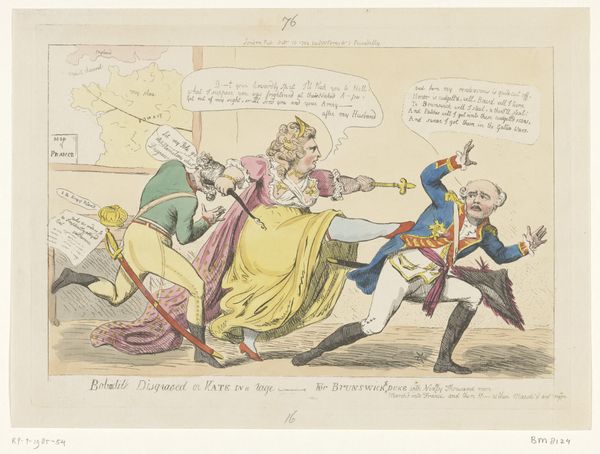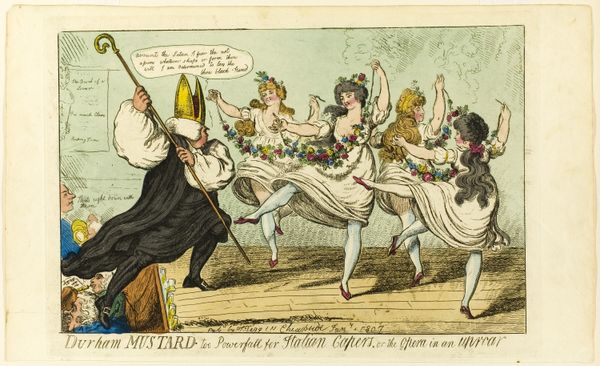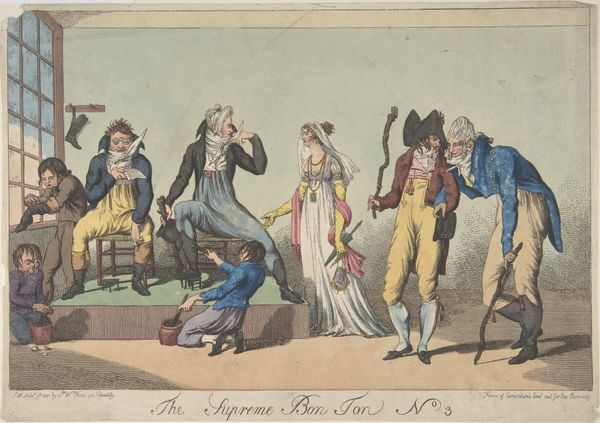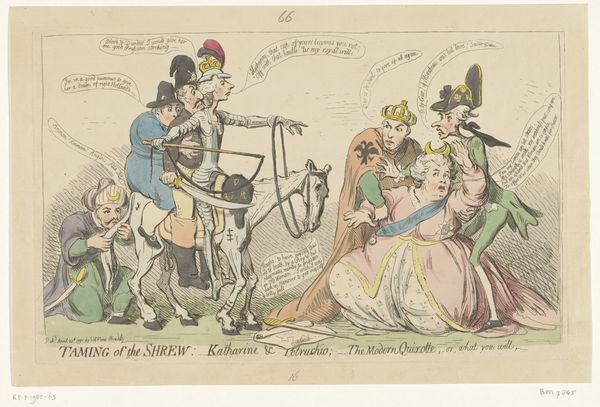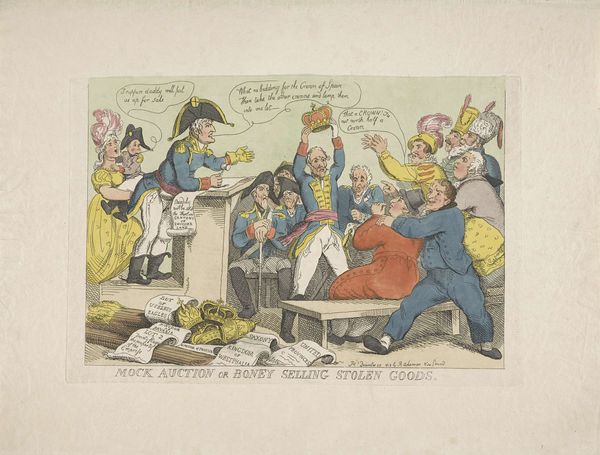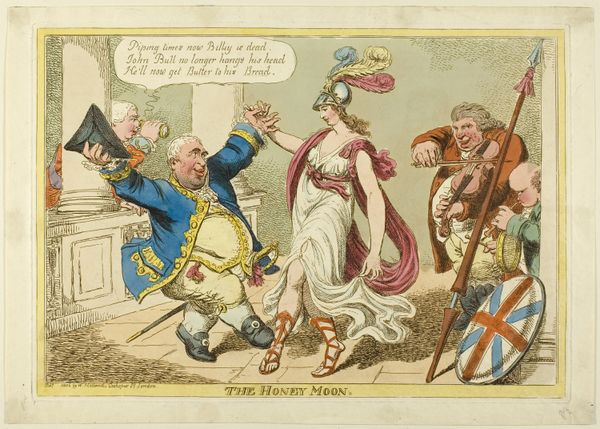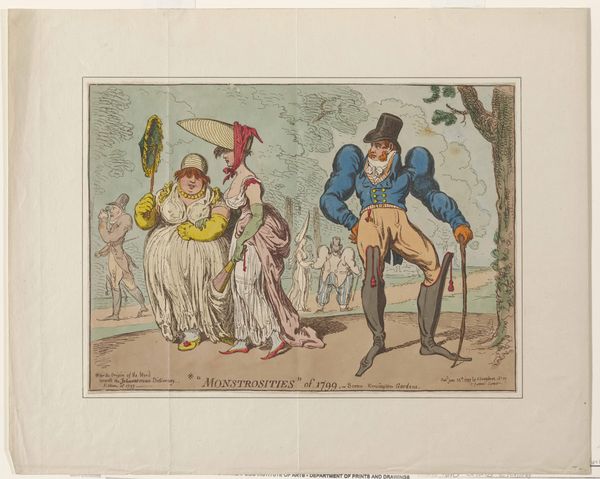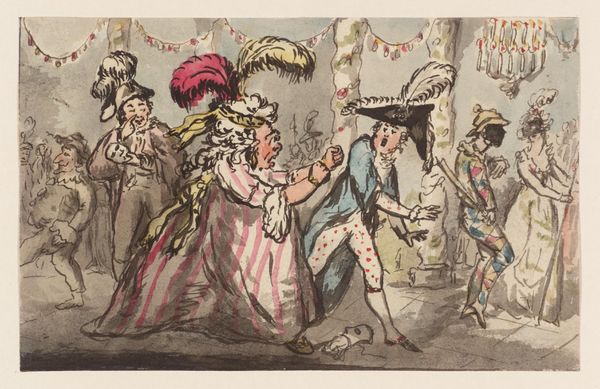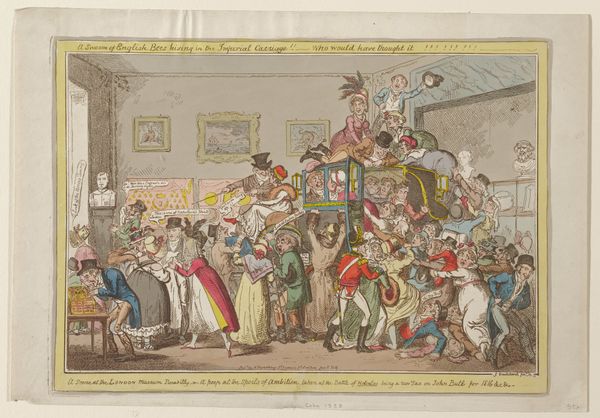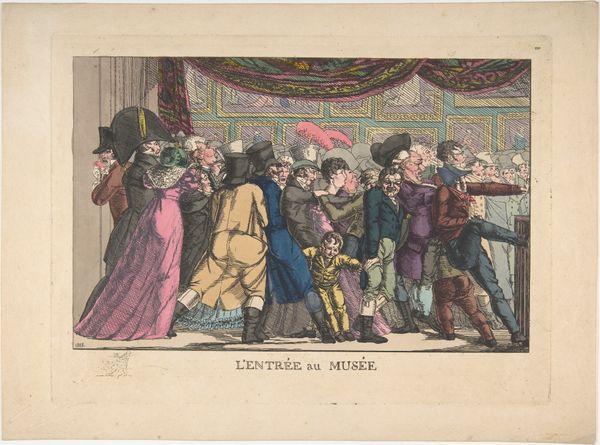
Lodewijk XVI en Marie Antoinette betrapt tijdens hun vlucht, 1791 Possibly 1791 - 1796
0:00
0:00
print, etching
#
neoclacissism
# print
#
etching
#
caricature
#
cartoon sketch
#
romanticism
#
watercolour illustration
#
history-painting
#
cartoon carciture
Dimensions: height 250 mm, width 352 mm
Copyright: Rijks Museum: Open Domain
Editor: We’re looking at "Lodewijk XVI en Marie Antoinette betrapt tijdens hun vlucht, 1791," an etching by James Gillray from the late 1790s, here at the Rijksmuseum. It’s pretty chaotic, everyone’s got these exaggerated expressions, and there’s definitely a story being told. What stands out to you? Curator: It strikes me as a rather blunt, bombastic take, dripping with the artist’s… shall we say… *robust* opinions. Gillray wasn't exactly subtle, was he? The sheer volume of enraged faces brandishing bizarre weapons – someone’s holding a broom! It's like a nightmare funhouse version of the French Revolution. Don't you think? Are we meant to feel sympathetic, or is it all just lampooning royalty caught with their breeches down? Editor: Lampooning, definitely. I mean, just look at Louis, clutching a tiny child for dear life! It's more comical than tragic. The style is interesting though. Not quite as polished as other neoclassical work I've seen. Curator: Exactly! He’s twisting neoclassicism with his brand of venomous caricature. Think of it as visual political commentary, not historical record. And tell me, who *exactly* do you think commissioned this work? Someone keen on retaining the monarchy or riling up revolutionary fervor? Editor: Point taken! It feels less about accurately portraying events and more about… inciting a reaction. Is that fair to say? Curator: Absolutely! And isn't that what makes it fascinating, even centuries later? This little etching is still kicking up dust, making us question our perspectives and whose narrative we’re buying. Editor: I hadn’t thought about it like that before. So it’s less about the what and more about the why… why create this wild scene in the first place? Thanks for this insight!
Comments
No comments
Be the first to comment and join the conversation on the ultimate creative platform.

